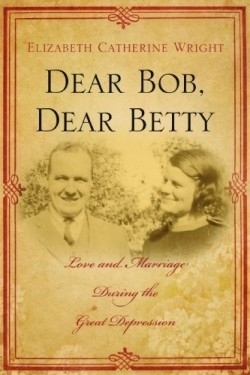Dear Bob, Dear Betty
The exchange of impassioned written messages is a time-worn way for lovers to communicate, whether they are separated by great distances or mere miles. They wait impatiently to hear from their beloved and, when no letter arrives, suffer from inconsolable anguish until the anticipated missive finally comes. The drama enacted here by real-life lovers creates a tension worthy of fiction.
Dear Bob, Dear Betty collects the correspondence of Elizabeth Bryan Kehler and Robert Llewellyn Wright from October 1932 to August 1933. Their daughter, Elizabeth Catherine Wright, began compiling the letters after her mother’s death in 2005. Wright lives in southwestern France and is a professor emeritus in French literature.
Wright’s introduction includes family photographs and summaries of her parent’s respective backgrounds and emotional challenges. Bob was only five years old when his father, the noted architect Frank Lloyd Wright, deserted his family to live with another woman. Betty’s father followed a similar pattern, leaving his wife and two sons before Betty was even born. Their shared experiences of paternal absence and growing up in Oak Park, Illinois, intensified a mutual attraction ignited when they met as young adults. Betty lived and worked in Milwaukee while Bob had just begun practicing law in Chicago.
As the two became better acquainted, their correspondence reflects the excitement of new-found love and their struggles to understand one another. After an initial discussion of marriage, Betty’s insecurities surface as she attempts to clarify their status. Her letter concludes, “I have given you enough to misinterpret for one day. Not that I feel misunderstood but that letters are inevitably misinterpreted.”
Bob’s concern that his income won’t adequately support them both keeps him from rushing into marriage, especially when it becomes clear that Betty can’t land a job in Chicago at the height of the Great Depression. In March 1933, he writes, “I still feel I can make it go if general business conditions will only stop regressing…but the present problem is how to succeed while the world around you is failing.”
Despite their longing for each other and strong desire to marry, they seem unable to set a date. Betty’s fears reach peak level in mid-June. “I’ve cut myself loose from the little security I had, and it makes me frantically and selfishly eager to have you marry me, so that I may regain some confidence in my future,” she writes. Bob’s letter to her, written the following day, asks, “Are you ashamed of our love?”
Betty and Bob’s love letters provide an authentic glimpse into the lives of two intelligent people striving to begin a life together during the most fiscally challenging period of the twentieth century. Their correspondence reflects genuine emotional tension that holds the reader’s interest from start to finish.
Disclosure: This article is not an endorsement, but a review. The publisher of this book provided free copies of the book and paid a small fee to have their book reviewed by a professional reviewer. Foreword Reviews and Clarion Reviews make no guarantee that the publisher will receive a positive review. Foreword Magazine, Inc. is disclosing this in accordance with the Federal Trade Commission’s 16 CFR, Part 255.

